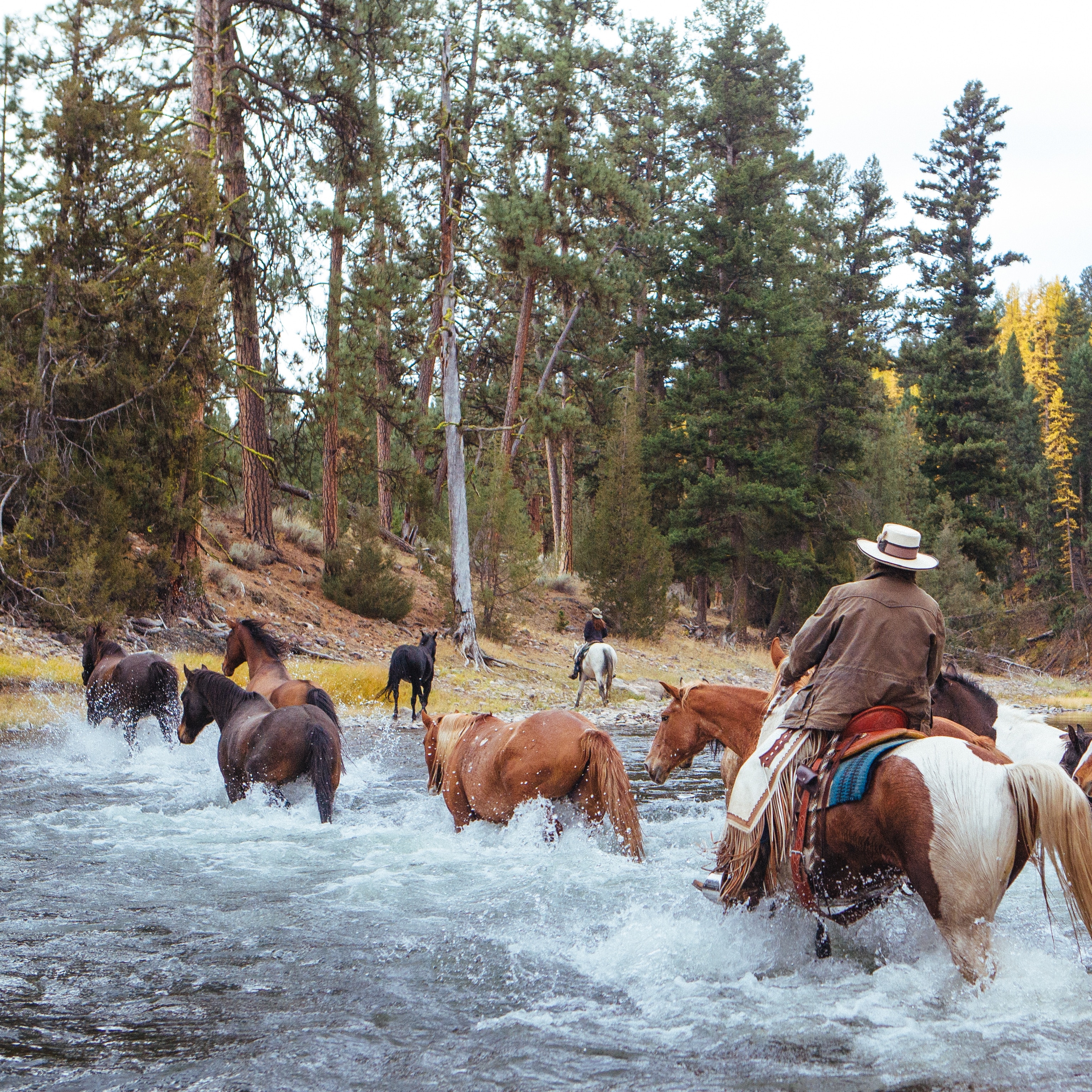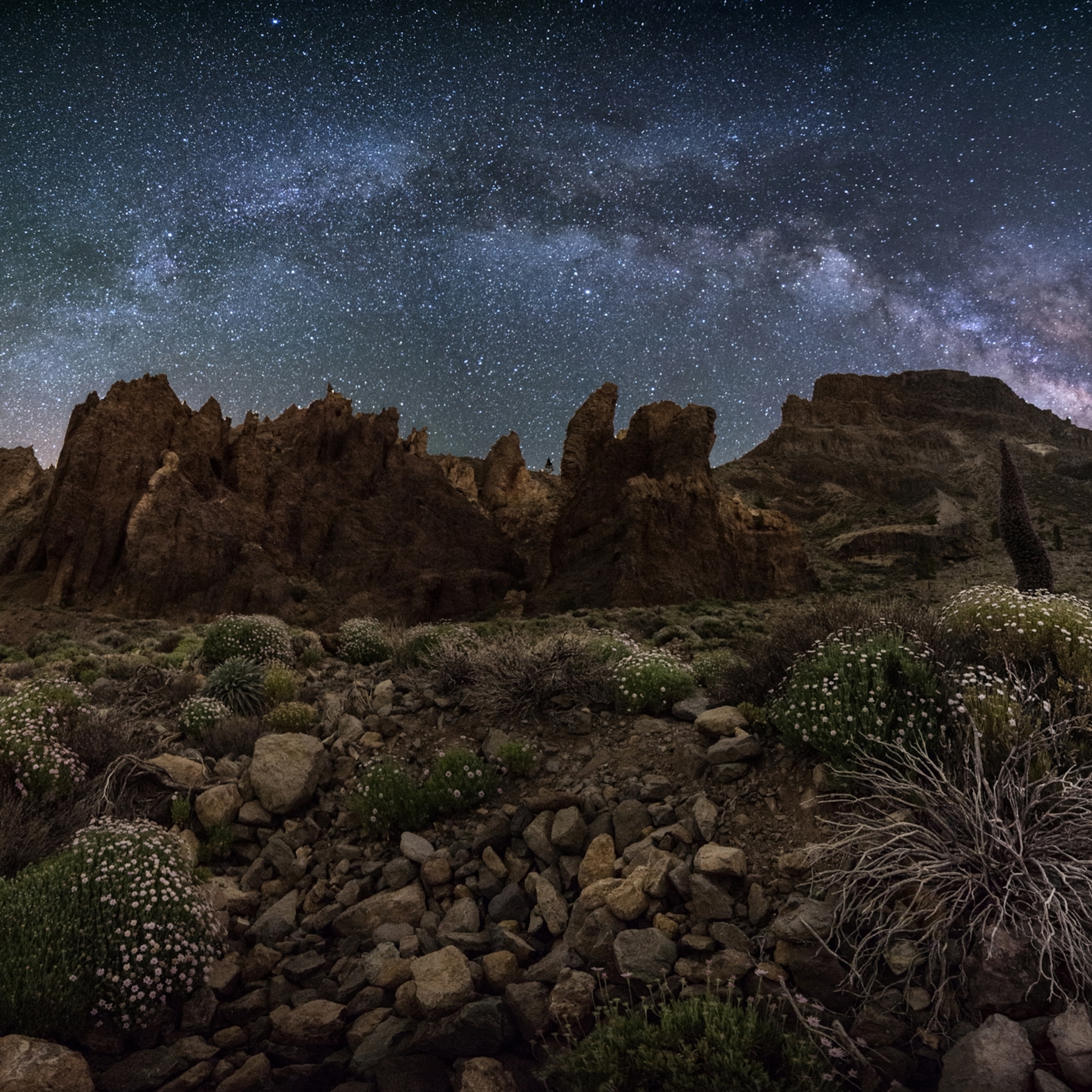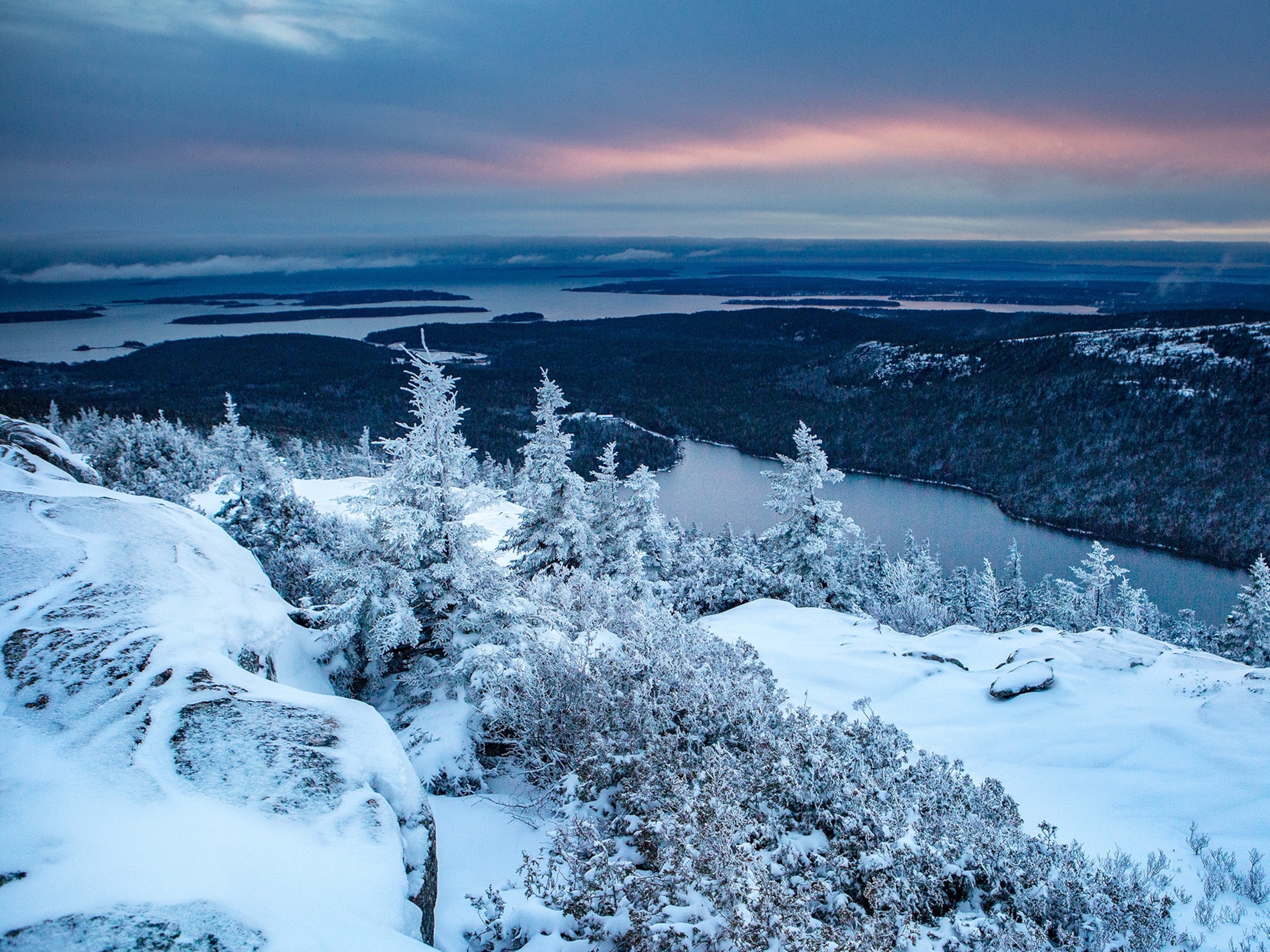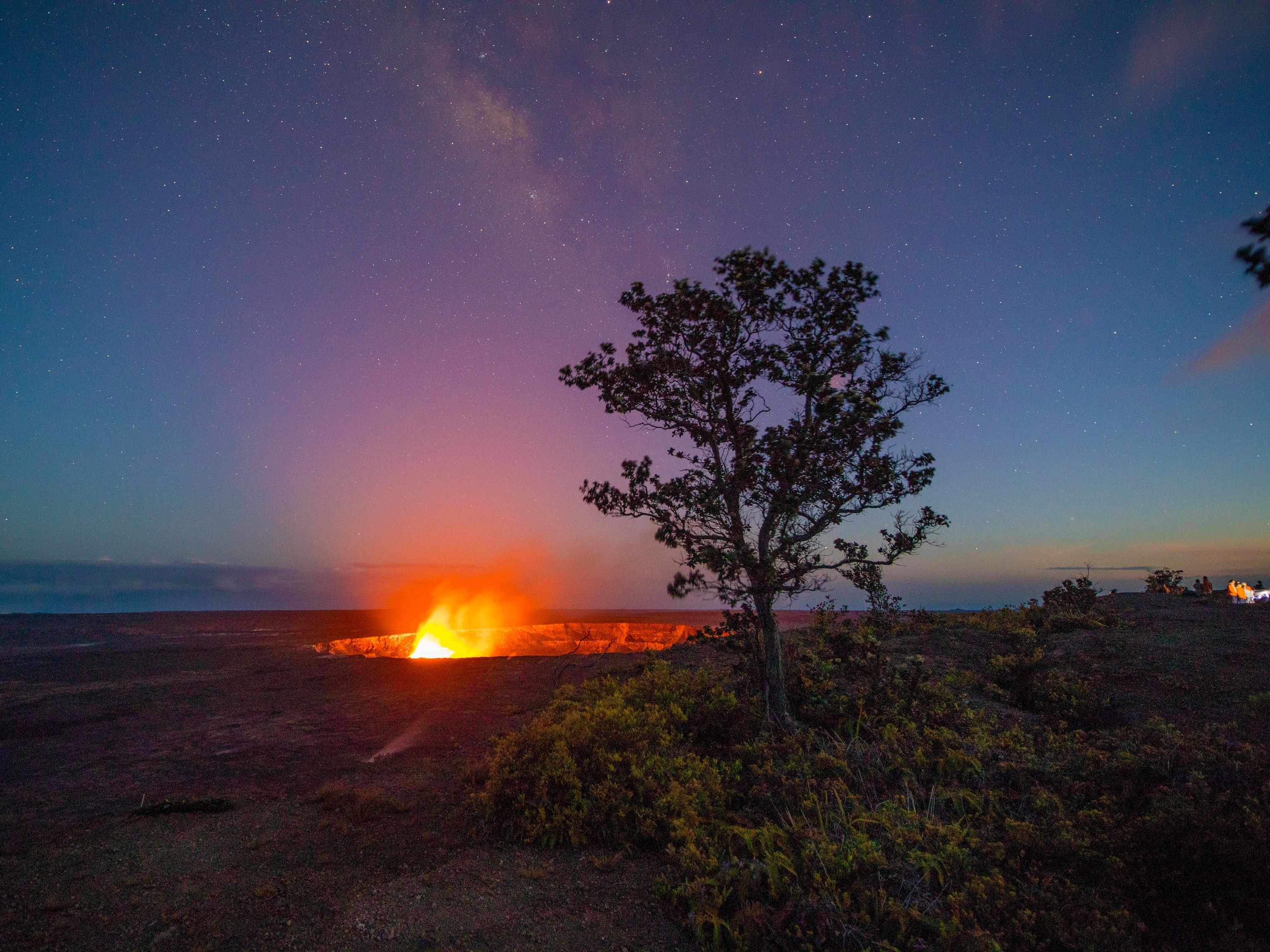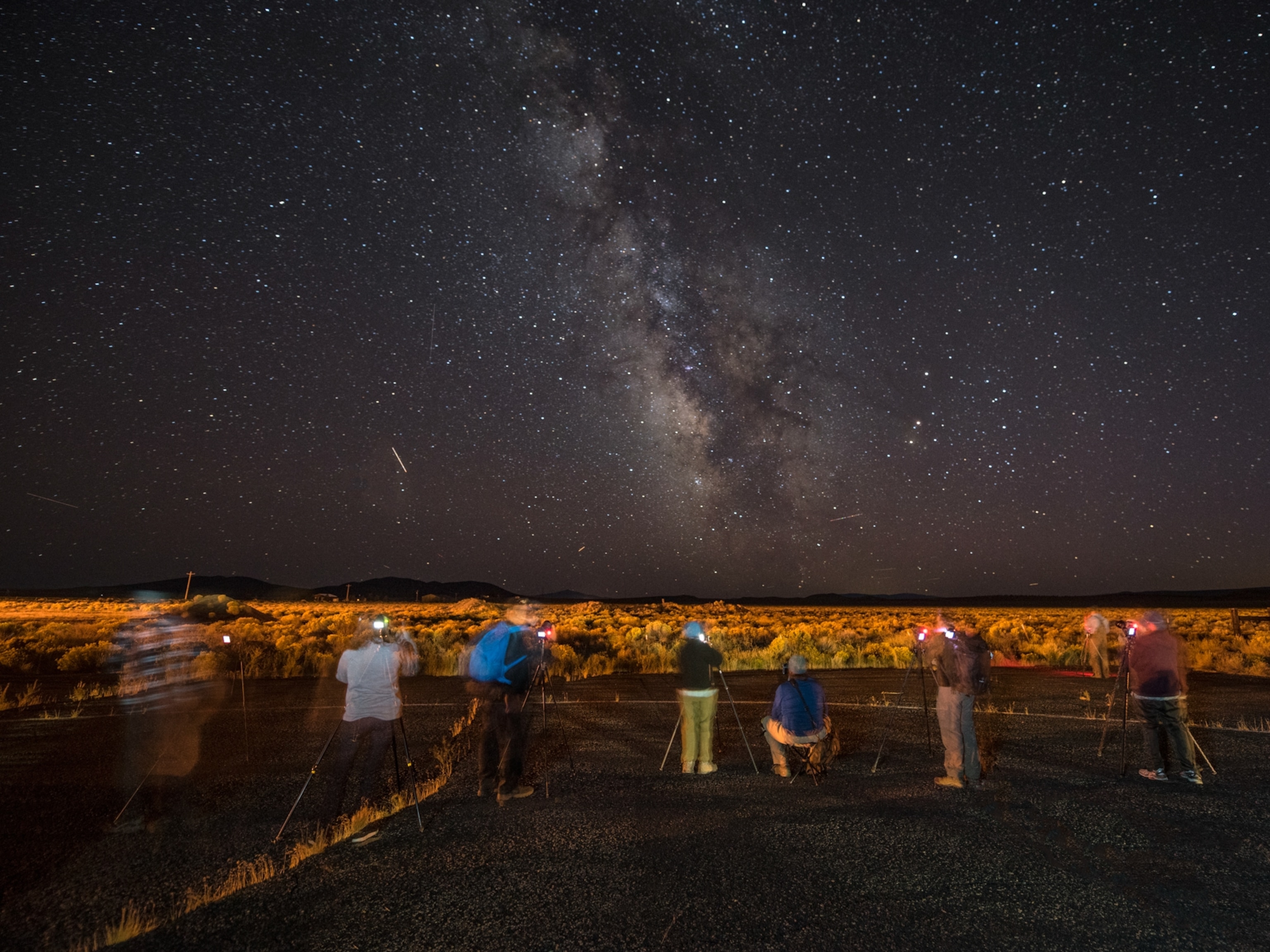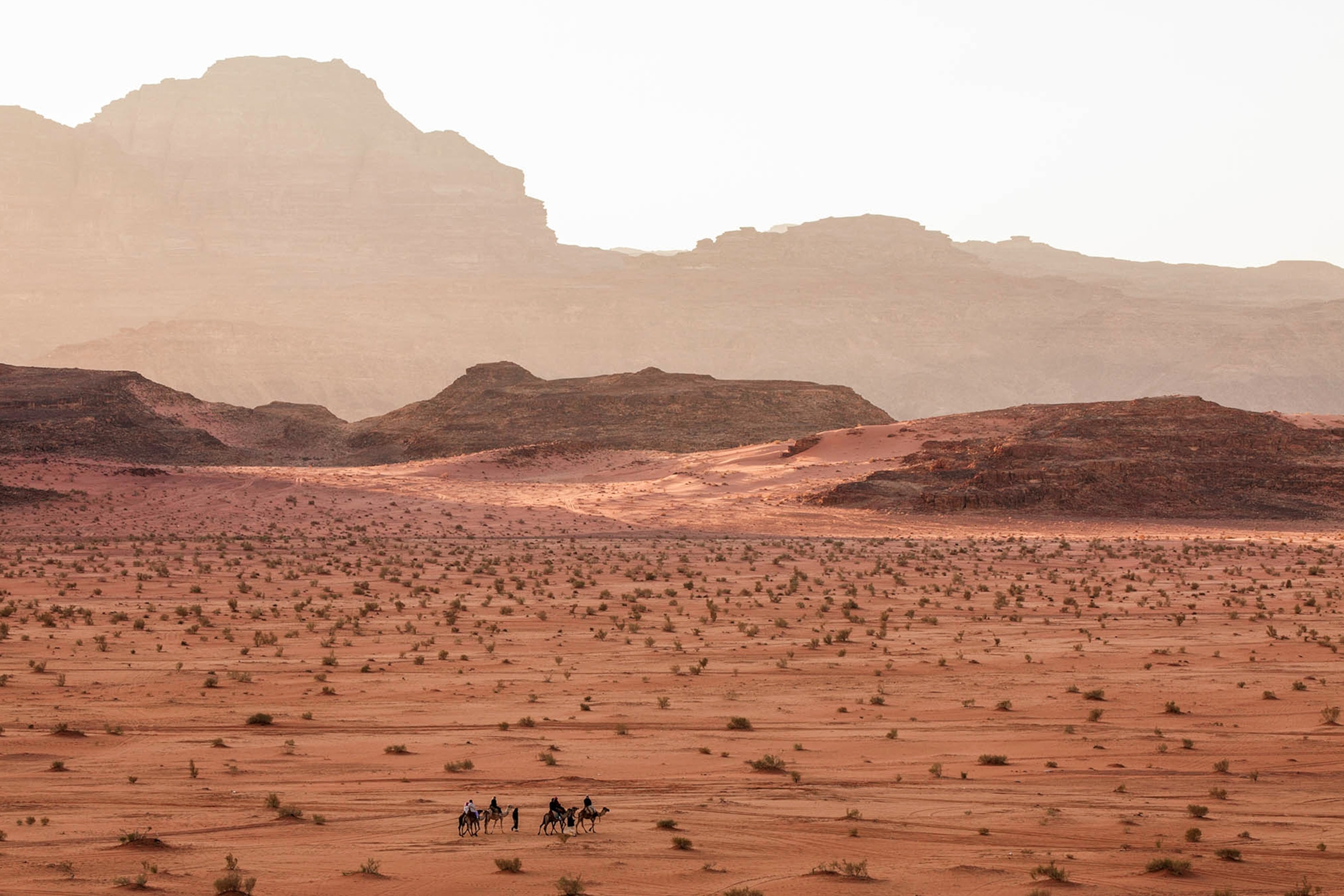
Visiting Jordan's Wadi Rum
National Geographic correspondent Andrew Evans journeyed through the stunning Jordanian desert with a Bedouin guide—finding the perfect night sky, experiencing a traditional camp, and trekking along the red sand dunes.
The twin beams of our headlights jiggle over the dirt, lighting up a small but constant patch of empty night. The seats squeak, my body swaying in the front as the copper-colored ground grabs at our tires and small rocks bang against the undercarriage.
“Toyota is the best car for the desert,” Moslam Sabbah Ateag says, matter-of-factly, and I nod, though I have never owned a Toyota, nor driven any kind of car through the sand for hours on end. Already I have lost all sense of direction and my GPS says “No signal”—there is no road, no sign, no lights on the horizon. There is nothing but the small rocks upon the sand, and our trusty Land Cruiser, like a rusty spaceship, humming along beneath an eternity of stars.
Two hours have passed since we turned off the great Desert Highway, the modern road that runs the length of Jordan. The road was paved upon the route religious scholars believe Moses followed during his exodus from Egypt. The wilderness feels no less wild than it seems in the stories of the Old Testament—we left the last signs of life back at the village of Rum, where bored camels stand tethered at gas stations and there’s a line of concrete houses resembling tents that cannot move.
I said no thank you to the hotel and the luxury tent with its beds and cushions and plumbing. I craved the true wilderness of Wadi Rum—to sleep outside in the vast vacancy of the world.
We eventually stop and make camp at the base of a layered bluff, guarded from the wind, though the night is clear and motionless. The cool air feels pleasant, and I am dressed for it, sporting a white, cotton abaya beneath a thick woolen cloak, my head wrapped in a checkered, red-and-white kaffiyeh. Suntanned, with a blondish beard, I am the obvious imposter—a cheap cosplay version of the Bedouin at my side—but Ateag doesn’t seem to mind. “You are wearing the best clothes for the desert,” he says.
Not in a lifetime of desert nights would I ever acquire the knowledge of the Bedouin, who have lived and wandered this desert with their animal herds for thousands of years.
“Our tent,” says Ateag, leading me into the open-sided shelter, woven by hand from the coarse, dark wool of his goats. It is the best shelter for this place, he says—light and airy, shaded and cool, and warm in winter, when the tent walls are dropped to the ground and the animals brought inside.
The smoke from our fire lifts easily and flows out through the open wall. I squat and help with dinner. For an hour, it seems, we grill chicken over the white-hot coals, then eat with our hands, licking the greasy spice from our fingers. Then comes a glass of tea as sweet as candy, and then another, as we sit on rugs, the conversation trailing until the fire is gone.

Out here, my guide stops being my guide—he is an older brother, watching over me, even making my bed on the open ground and tucking me in with a soft, woolen blanket. Ateag wraps me up like a mummy, finishing with the kaffiyeh wrapped around my head, keeping my ears warm as my eyes take in the midnight sky.
The colossal cosmos comes into focus, all the white dots of light soon showing their bright personalities of red, blue, green, and gold. We are just 40 miles from the port city of Aqaba, but four light-years away from Alpha Centauri, the nearest star system outside our own—and yet the heavens seem brighter and closer than any place on Earth.
The air is cold—near freezing—but I am warm and comfortable, approaching sleep. Ateag mumbles and his soft and guttural Arabic sounds like a lullaby. A small flash zips diagonally across the sky. Another follows, burning out as fast as the next one appears. The meteors go on, and Ateag explains.
“We say that every shooting star destroys a jinn, or evil spirit, defending the world from Shaitan—the devil.”
“And we say that you can wish on a shooting star, and it will come true,” I reply, though my version suddenly seems selfish. But tonight, there are too many shooting stars and I have run out of wishes, or else the jinn are ganging up on us, hypnotizing me with a battalion of dancing stars.
At dawn an even closer star—the sun—wakens me. I peel off the still warm bedclothes and strap on my boots, leaving Ateag asleep on the ground. The light reveals our surroundings—the slant of rosy sand that ripples all the way to the mounds of stone, honeycombed with a million pockets caused by wind erosion, the perfect home for shy birds.
Larger, pinker cliffs mark the horizon, illuminated by the patient sun. I breathe in the unbreakable silence and start hiking, soon stepping across the line that separates last night’s shadow and this morning’s warmth. The sand changes to the color of wild-caught salmon—flushed, coral, and glowing with promise. Sprouts of dried-up green brush interrupt the desert like an afterthought with the curvy lines of tiny, timid paw prints scribbled in the sand like punctuation.
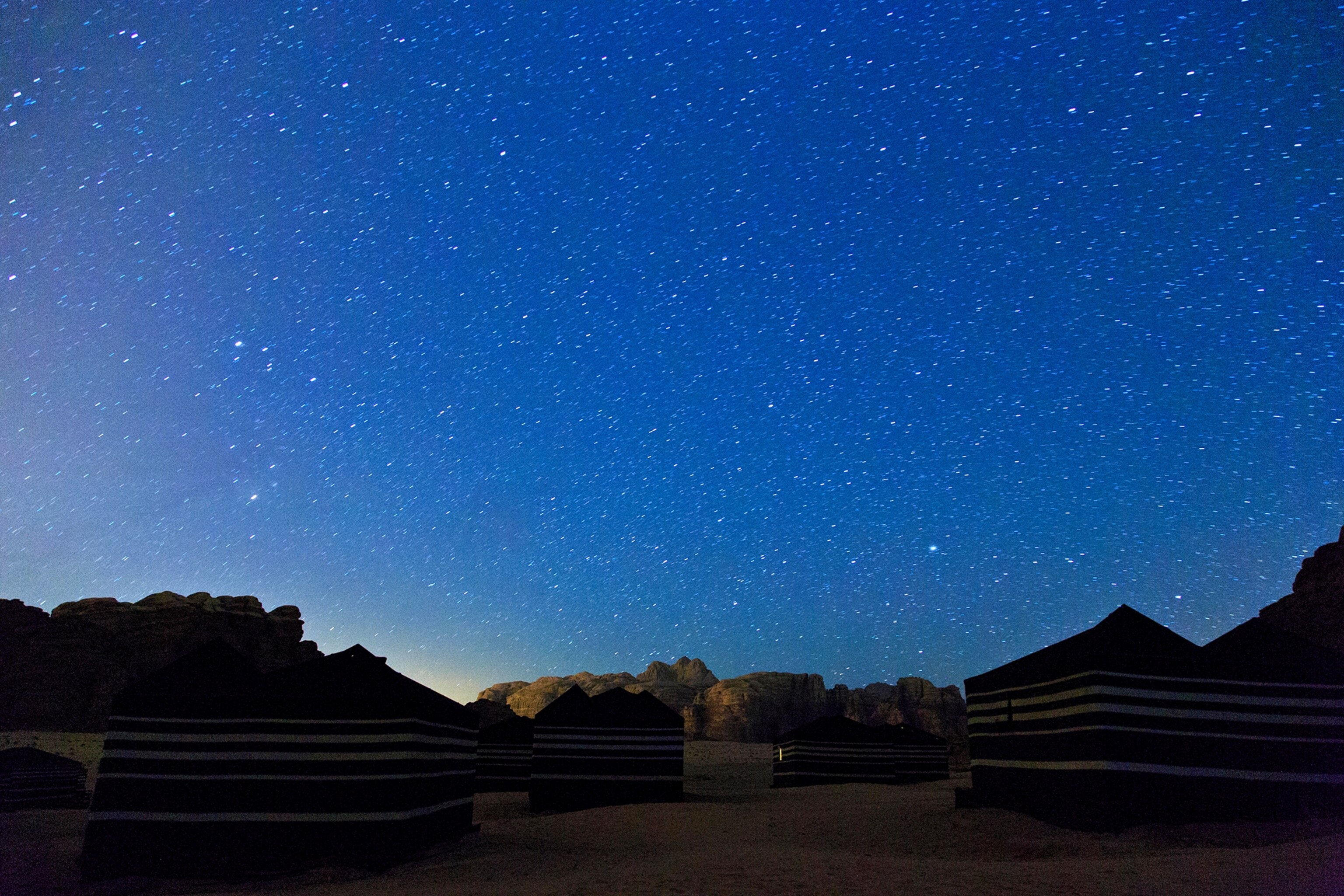
The Bedouin call this “reading the morning news”—deciphering the night’s activities by the crisscross of animal prints: scampering desert mice, hungry birds, the hunting hyena, and the startled gazelle. I find a strange comfort in these signs of life—confirmation that I am not alone, and proof that I am not the first traveler to wander this mile of dirt.
- National Geographic Expeditions
Nor am I the first to be overcome by the haunting stillness of the desert, or to be lost in the immensity of stars, or to wake up and instinctively walk toward the sun. My own DNA (analyzed by the the Genographic Project) reveals that my distant ancestors trod this same patch of Earth some 50,000 to 60,000 years ago. In this way, Wadi Rum feels both strange and familiar, as if the new sun has wakened the memory of my genes—and now my smallest cells remember this place and know it as home. Indeed, my own grandmother lived here, some 2,000 grandmothers ago.
It takes me another hour to hike back to our camp, taking the long way around the sandstone ridge.
“Good morning,” says Ateag, in Arabic.
“Morning of light,” I reply, as is customary. My guide is unfazed by my absence, for you cannot get lost with a Bedouin.
“I saw your footprints heading east. I could find you if I had to,” he says, rolling up his prayer rug and adding a fraternal command, “Now go and gather some wood.”
I help feed the fire, and Ateag makes tea, dumping in a full cup of sugar and laughing with the ease of morning and the promise of a clear, hot day. It takes about seven minutes to pack up camp, and then we are off once more, wandering the great Arabian Desert, two fellow nomads—my distant Bedouin cousin and me.
